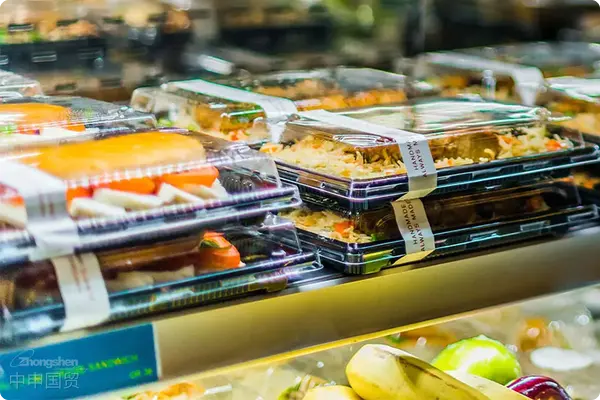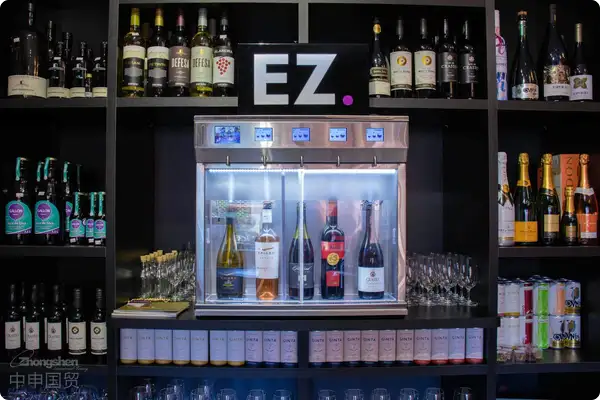- Shanghai Zhongshen International Trade Co., Ltd. - Two decades of trade agency expertise.
- Service Hotline: 139 1787 2118
Imported food has gradually become part of peoples daily lives. As an important component, pre-packaged foodImport Clearancerequires compliance with a series of regulations and requirements. This article will introduce the customs clearance process, required documents, and costs for importing pre-packaged food to help relevant enterprises better understand and operate this process.

Definition and Labeling Requirements for Pre-Packaged Food
Definition of Pre-Packaged Food
Pre-packaged food refers to food that is pre-packaged in packaging materials and containers with a predetermined quantity. It includes food that is pre-packaged in packaging materials and containers with a uniform quality or volume mark within a certain range. Simply put, it is food that has a certain quantity value after packaging, and this value should have a uniform quality or volume mark within a certain range.
Labeling requirements for prepackaged foods
The label of prepackaged food refers to the general term for all descriptions including text, graphics, symbols, and other information on food packaging. The label should include the following contents:
(1) Food name: Clearly indicate the name of the food product.
(2) Ingredient list: A list of ingredients arranged in descending order by weight.
(3) Net quantity and specifications: Indicate the net content and specifications of the food.
(4) Name, address, and contact information of the manufacturer and/or distributor.
(5) Production date and shelf life.
(6) Storage conditions.
(7) Food production license number.
(8) Product standard number.
(9) Other required labeling information (such as irradiated food, genetically modified food, nutrition labeling, quality grade, etc.).
Review of food ingredient lists
Ingredients in the list should be arranged in descending order by weight. Ingredients constituting less than 2% of the total may not be listed in descending order. The position of food additives should be marked based on the total weight of all additives. Labeling errors occasionally occur, and companies should pay special attention.
Customs Clearance Process for Importing Pre-Packaged Food
The customs clearance process for imported prepackaged foods includes the following steps:
(1) Overseas stock preparation:Prepare the food products and arrange transportation.
(2) Document preparation:Include necessary documents such as contracts, invoices, and packing lists.
(3) Label pre-review:Conduct preliminary review of product labels to ensure compliance with import requirements.
(4) Shipment:Arrange transportation of goods to domestic ports.
(5) Consignee registration:Register consignee information with customs.
(6) Goods arrival at port:Upon arrival, conduct bill exchange and customs declaration inspection.
(7) Inspection:Customs inspects the goods to ensure they meet import standards.
(8) Commodity inspection clearance document:After passing inspection, customs issues the inspection clearance document.
(9) Customs Declaration:Submit customs declaration documents to customs.
(10) Tax Payment:Pay customs duties and VAT according to the tax assessment notice issued by customs.
(11) Customs Inspection:Customs conducts dynamic sanitary inspection.
(12) Warehouse Labeling:Affix labels at the commodity inspection warehouse.
(13) Sampling:The Commodity Inspection Bureau conducts product sampling inspection.
(14) Label Filing:After label filing is completed, the goods are released.
(15) Sanitary Certificate:Upon passing inspection, a sanitary certificate is issued.
(16) Domestic Sales:Goods can enter the market for sale.
Required Documents for Importing Pre-Packaged Food
Contract, invoice, packing list, bill of lading.
ForeignIt is recommended to verify through the following methods:and sanitary certificate.
Customs declaration and inspection power of attorney.
Sample of Chinese and English labels.
Importer registration certificate for imported food.
Copy of the consignees business license.
Other relevant documents.
Tariffs and Costs for Importing Pre-Packaged Food
Tax Rate
Different types of prepackaged food may have different tax rates, mainly including:
Customs duty: Specific rates depend on food category and country of origin.
VAT: Typically 13%.
Consumption tax: Some food products are subject to consumption tax, with rates varying by product type.
: A single operation costs about
Customs taxes: Including customs duty, VAT, and consumption tax.
Label production and design fees.
Customs declaration fees.
Commodity inspection fees.
Container inspection fees.
Port terminal fees.
Warehousing fees.
Distribution fees.
The customs clearance process for imported prepackaged food involves multiple steps and strict regulatory requirements. From document preparation and label pre-approval to actual customs clearance and subsequent sales, each step requires careful planning and operation. Understanding and complying with relevant regulations, preparing all necessary documents, and being familiar with the customs clearance process can effectively avoid delays and economic losses, ensuring smooth market entry of imported food to meet consumer demand.
Related Recommendations
Category case
Contact Us
Email: service@sh-zhongshen.com
Related Recommendations
Contact via WeChat

? 2025. All Rights Reserved. Shanghai ICP No. 2023007705-2  PSB Record: Shanghai No.31011502009912
PSB Record: Shanghai No.31011502009912








